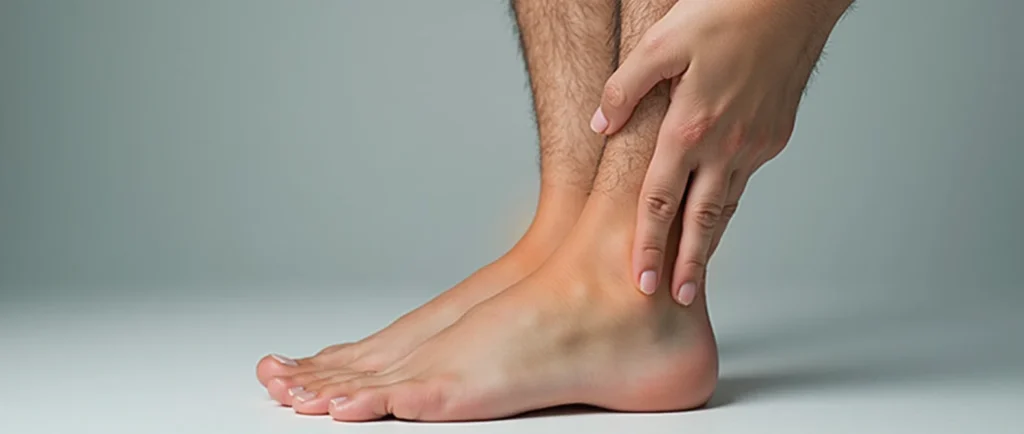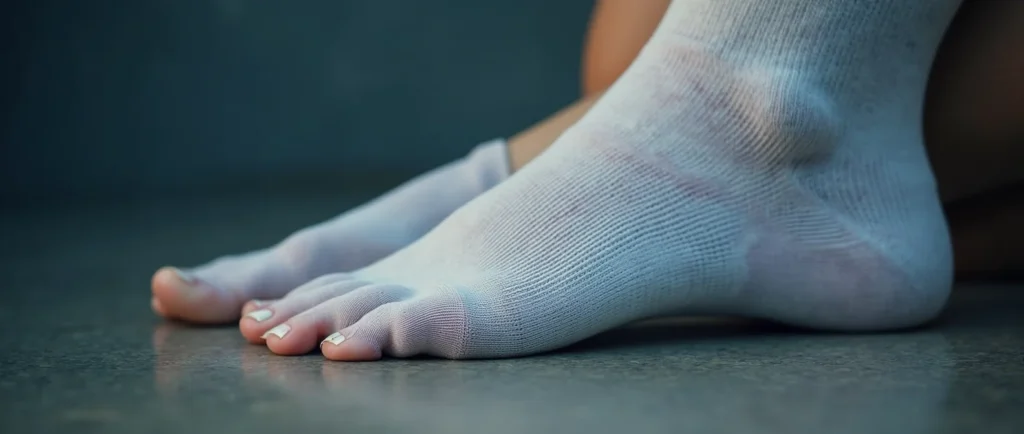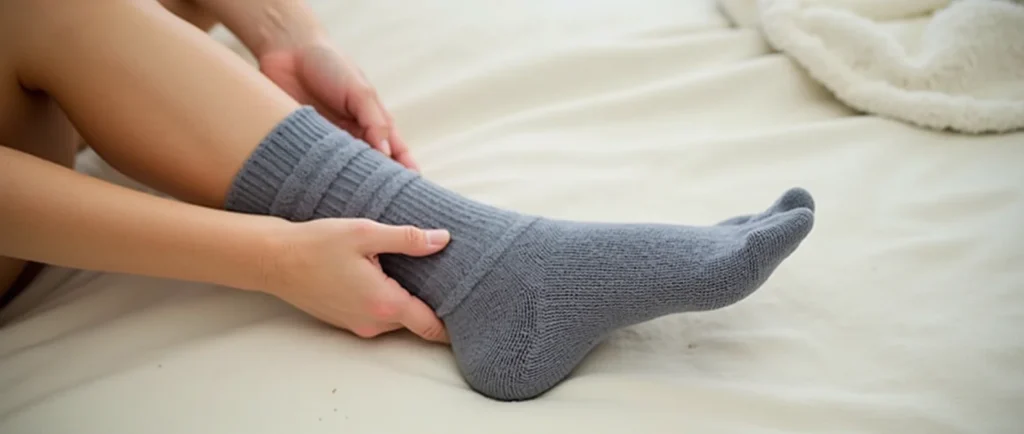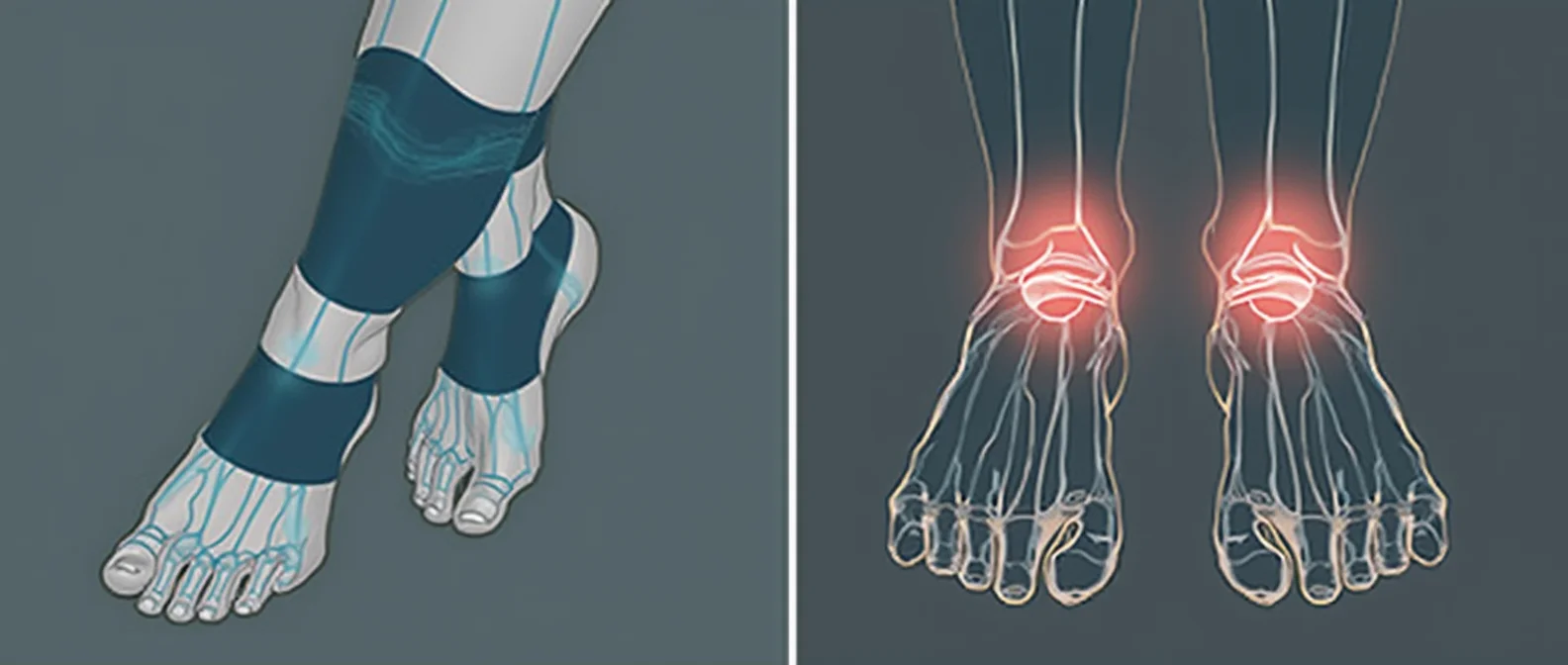Introduction: Understanding Neuropathy and Compression Socks
Neuropathy is a condition that affects millions of people worldwide, causing symptoms like numbness, tingling, burning sensations, and pain, often in the hands and feet. For those suffering from neuropathy, finding effective treatments can be life-changing. You may have heard about compression socks and wondered if they can help manage your neuropathy symptoms. This article explores how compression socks work, whether they can benefit you, and how to choose the right pair to alleviate discomfort and improve your quality of life.
Compression socks have gained significant attention in recent years as a non-invasive solution to help relieve symptoms associated with poor circulation, varicose veins, and conditions like neuropathy. If you’re struggling with neuropathy, you may find that compression socks offer the relief you’re seeking.
Table of Contents
What is Neuropathy?
Before we dive into how compression socks can help, it’s important to understand neuropathy itself. Neuropathy, or peripheral neuropathy, refers to nerve damage, often in the extremities (hands, feet, legs). This condition can be caused by various factors, such as:
- Diabetes: One of the leading causes of neuropathy, affecting millions of individuals.
- Chemotherapy: Some cancer treatments can cause nerve damage as a side effect.
- Trauma or injury: Physical damage to nerves can cause lasting effects.
- Other medical conditions: Autoimmune diseases, infections, and vitamin deficiencies can also contribute to nerve damage.
Neuropathy can lead to a wide range of symptoms, including:
- Tingling or a “pins and needles” sensation
- Numbness or lack of sensation
- Burning or sharp pain
- Muscle weakness or cramps
These symptoms can significantly impact your daily life, making it difficult to walk, drive, or even perform basic tasks. Managing these symptoms is essential for improving your quality of life. One potential solution worth considering is compression socks.

How Compression Socks Work
Compression socks are specially designed garments that apply gentle pressure to the legs and feet. This pressure is graduated, meaning the compression is strongest at the ankle and gradually decreases as it moves up the leg. The primary purpose of compression socks is to improve circulation, which can be especially helpful for people with conditions like neuropathy.
How does this work?
The gentle pressure exerted by compression socks helps:
- Improve blood flow: Compression helps to enhance circulation by promoting the return of blood to the heart.
- Reduce swelling: By applying pressure, compression socks can prevent fluid buildup in the lower legs and feet, which is a common issue for people with neuropathy.
- Support veins: Compression socks support the veins in your legs, preventing them from swelling and causing discomfort.
In the case of neuropathy, these effects can help by improving the blood flow to your nerves, potentially reducing symptoms like numbness, tingling, and pain.
do compression socks help neuropathy?
If you’re wondering whether compression socks can truly make a difference in managing neuropathy symptoms, the answer is yes — but with some important considerations.
Research shows that compression socks can help with various circulatory issues, and while they may not directly treat the underlying cause of neuropathy, they can relieve the symptoms by improving circulation and reducing swelling.
Here’s why compression socks may be beneficial for neuropathy:
- Better circulation: Neuropathy is often linked to poor circulation, particularly in the legs and feet. Compression socks work by helping to circulate blood more efficiently, which can relieve the discomfort associated with reduced blood flow to the nerves.
- Reduced swelling: One of the symptoms of neuropathy is swelling in the legs and feet. Compression socks help to reduce fluid retention, which can ease the pain and pressure caused by swelling.
- Pressure on nerves: Compression socks apply controlled pressure to the legs and feet, which can reduce the discomfort caused by nerve irritation. This can help alleviate symptoms like tingling or burning sensations.
Although compression socks can help alleviate neuropathy symptoms, it’s important to note that they are not a cure for the condition. However, they can be a valuable part of your overall strategy for managing symptoms.

What Types of Compression Socks Are Best for Neuropathy?
Choosing the right pair of compression socks is key to ensuring that they provide the maximum benefit for your neuropathy symptoms. Compression socks come in various compression levels, materials, and styles, and it’s essential to choose the right one for your specific needs.
Compression Levels
Compression socks are categorized by the level of pressure they exert. Here are the most common compression levels and their uses:
- Light Compression (8-15 mmHg): Suitable for mild symptoms of neuropathy. This level is ideal if you experience occasional swelling or mild discomfort.
- Moderate Compression (15-20 mmHg): Recommended for moderate symptoms. If your neuropathy causes more noticeable discomfort, swelling, or fatigue, moderate compression will provide additional support.
- High Compression (20-30 mmHg): Ideal for more severe symptoms. If your neuropathy is advanced or causes significant swelling or pain, high compression socks may be the best option.
Material Considerations
The material of compression socks is another important factor. Look for breathable fabrics, such as:
- Cotton: Soft and comfortable, but not as moisture-wicking as other materials.
- Nylon and Spandex: Offer a more durable fit with better stretch and moisture-wicking properties.
- Merino wool: Soft and breathable, providing natural moisture control.
These materials help ensure comfort while wearing your compression socks for extended periods.
Size and Fit
Getting the correct fit is crucial for the effectiveness of compression_socks. Compression socks should be snug, but not so tight that they cause discomfort or restrict blood flow. Ensure you measure your legs carefully to select the right size.
Styles and Colors
Compression_socks come in various styles, from knee-high to thigh-high, and even socks designed to be worn during specific activities, like running or sleeping. Choose the style that best fits your lifestyle and preferences.

How to Choose the Right Pair of Compression Socks
When selecting compression_socks, consider the following:
- Your symptoms: Light compression may be enough for mild symptoms, while more severe cases may require higher compression levels.
- Your lifestyle: If you plan on wearing compression_socks throughout the day, choose a breathable, moisture-wicking material.
- Consult with a doctor: If you have severe neuropathy or other medical conditions, it’s always a good idea to consult with a healthcare professional before purchasing compression_socks.
- Fit: Proper fit is crucial to ensure the socks work effectively. Make sure they provide a snug fit without causing discomfort.
Top Brands of Compression Socks for Neuropathy
There are several reputable brands offering high-quality compression_socks. Here’s a quick comparison of some top options:
| Brand Name | Compression Level | Price Range | Key Features |
|---|---|---|---|
| Brand A | 15-20 mmHg | $10 – $25 | Breathable fabric, seamless design |
| Brand B | 20-30 mmHg | $20 – $35 | Extra padding, moisture-wicking |
| Brand C | 8-15 mmHg | $15 – $30 | Adjustable fit, comfortable for all-day wear |
Potential Side Effects of Compression_Socks
Although compression_socks are generally safe to use, there are a few potential side effects to be aware of:
- Discomfort: If the socks are too tight, they may cause discomfort or restrict circulation. Always choose the right size.
- Skin irritation: Prolonged wear of compression_socks can sometimes cause skin irritation. If this occurs, try a different material or consult with your doctor.
How to Use Compression_Socks Effectively
To maximize the benefits of compression_socks, consider these tips:
- Wear them regularly: For best results, wear your compression socks during the day, especially when you’re on your feet for extended periods.
- Don’t wear them too long: Avoid wearing compression_socks for too long, especially at night. Most people find they get the best results by wearing them for 8-12 hours during the day.
- Monitor comfort: Make sure the socks fit comfortably and don’t cause any discomfort.
Alternative Treatments for Neuropathy
Compression_socks can be a helpful tool for managing neuropathy, but they are not the only option. Here are a few other treatments to consider:
- Physical therapy: Helps strengthen muscles and improve circulation.
- Medications: Prescription or over-the-counter medications may be used to manage pain and discomfort.
- Lifestyle changes: Maintaining a healthy diet, exercising, and managing blood sugar levels (for diabetics) can all contribute to reducing the severity of neuropathy symptoms.
Conclusion: Finding Relief with Compression_Socks
Compression_socks may not cure neuropathy, but they can offer significant relief by improving circulation, reducing swelling, and easing nerve discomfort. By choosing the right pair of compression_socks for your specific needs, you can take an important step toward managing your symptoms and improving your overall quality of life. Whether you opt for light or high compression, the key is to find the right fit and material for your lifestyle.
Remember to consult your healthcare provider before making any changes to your treatment routine. Compression_socks can be a valuable addition to your neuropathy management plan, helping you live more comfortably and regain control over your daily activities.
FAQs
Q1: Do compression_socks really help with neuropathy? Yes, compression__socks can help by improving circulation, reducing swelling, and alleviating discomfort caused by nerve irritation.
Q2: What compression level is best for neuropathy? It depends on the severity of your symptoms. Light compression (8-15 mmHg) may work for mild symptoms, while moderate to high compression (15-30 mmHg) is recommended for more severe cases.
Q3: Can I wear compression_socks overnight for neuropathy? It’s generally safe to wear compression_socks overnight, but you should ensure they fit comfortably and don’t cause any discomfort.
Q4: Are there any side effects of wearing compression_socks? Some people may experience discomfort or skin irritation if the socks are too tight or if they’re worn for too long. Always ensure a proper fit and take breaks as needed.
- Spectra Sock for Prosthetic Foot: Comfort, Durability, and Enhanced Mobility
- best Socks for Foot Neuropathy – Shop Comfort and Support
- Do Compression Socks Help Neuropathy? Find the Right Pair Now
- Best Compression Socks for Neuropathy – Relieve Pain Today
- Socks for Neuropathy: How They Help Relieve Foot Pain and Improve Comfort
You provide useful and clear content. Thank you for your efforts.
This article remains a trusted resource for many people who want to improve their daily comfort and manage the symptoms of neuropathy.

